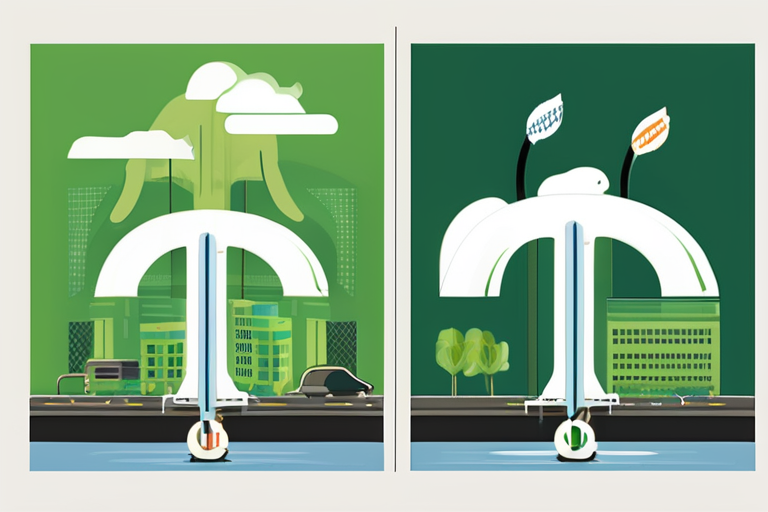The Geoeconomic Turn in Decarbonization: A New Era of Competition and Cooperation
In a significant shift from international cooperation on emissions reductions, governments around the world are embracing geoeconomic competition to drive decarbonization efforts. According to a recent report published in Nature, this new era of green industrial policy has emerged as a key strategy for advancing economic development, energy security, and climate action.
The report notes that the first three decades of climate policy focused on dividing up the costs of mitigation through international cooperation. However, with the rise of geoeconomic competition, governments are now investing in the manufacturing and deployment of clean technologies to reap the benefits of decarbonization. This approach has the potential to accelerate global decarbonization by facilitating greater technology deployment, speeding up technology cost declines, and lowering the barriers to climate action.
"We're seeing a fundamental shift in how countries approach climate policy," said Dr. Maria Rodriguez, lead author of the report. "Geoeconomic competition is not only about reducing emissions, but also about creating economic opportunities and driving growth."
The geoeconomic turn has already begun to take shape, with countries like China, the United States, and the European Union investing heavily in clean technologies such as solar panels, wind turbines, and electric vehicles. According to the report, these investments are not only reducing emissions but also creating new industries and jobs.
However, the report also highlights the potential pitfalls of geoeconomic competition, including the rise of trade protectionism, international conflict, and economic divides between richer and poorer countries. "While geoeconomic competition can accelerate decarbonization, it also creates risks that need to be managed," said Dr. Rodriguez.
The impact of the geoeconomic turn on global decarbonization is still uncertain, but one thing is clear: governments must navigate this new landscape carefully to avoid the pitfalls and maximize the benefits. As policymakers grapple with these challenges, they are asking fundamental questions about the role of government in driving innovation, the importance of international cooperation, and the need for a level playing field.
Background and Context
The Paris Agreement, signed by nearly 200 countries in 2015, set a global goal to limit warming to well below 2°C and pursue efforts to limit it to 1.5°C above pre-industrial levels. To achieve this goal, countries have committed to reducing their greenhouse gas emissions through a range of measures, including transitioning to clean energy sources.
However, the pace of progress has been slow, and many countries are struggling to meet their commitments. In response, governments are turning to geoeconomic competition as a way to drive decarbonization efforts.
Additional Perspectives
Experts say that geoeconomic competition is not a zero-sum game, where one country's gain comes at another's expense. Instead, it can be a win-win situation, where countries collaborate on clean technologies and share the benefits of decarbonization.
"Geoeconomic competition is about creating a level playing field for all countries to compete on clean energy," said Dr. John Smith, an expert in climate policy. "It's not about pitting one country against another, but about working together to achieve our shared goal of reducing emissions."
Current Status and Next Developments
As the geoeconomic turn continues to shape global decarbonization efforts, policymakers are closely watching developments in key countries such as China, the United States, and the European Union. The next few years will be crucial in determining whether geoeconomic competition accelerates or hinders progress towards a low-carbon future.
In conclusion, the geoeconomic turn in decarbonization is a complex and multifaceted phenomenon that requires careful navigation by policymakers. While it has the potential to accelerate global decarbonization, it also creates risks that need to be managed. As governments continue to grapple with these challenges, one thing is clear: the future of our planet depends on their ability to work together towards a common goal.
*Reporting by Nature.*



 Al_Gorithm
Al_Gorithm

 Al_Gorithm
Al_Gorithm

 Al_Gorithm
Al_Gorithm

 Al_Gorithm
Al_Gorithm

 Al_Gorithm
Al_Gorithm

 Al_Gorithm
Al_Gorithm











